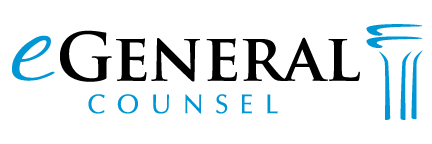 On July 10, 2013, the Securities and Exchange Commission (SEC) adopted final rules amending Rule 506 of Regulation D under the Securities Act of 1933 (Securities Act) permitting issuers to engage in general advertising and general solicitation in Rule 506 offerings made solely to accredited investors. The amendments to Rule 506 are contained in Securities Act Release No. 33–9415 (July 10, 2013).
On July 10, 2013, the Securities and Exchange Commission (SEC) adopted final rules amending Rule 506 of Regulation D under the Securities Act of 1933 (Securities Act) permitting issuers to engage in general advertising and general solicitation in Rule 506 offerings made solely to accredited investors. The amendments to Rule 506 are contained in Securities Act Release No. 33–9415 (July 10, 2013).
As I discussed in a previous article, since the adoption of the Securities Act in 1933, it has been an essential element of a private placement under section 4(2) of the Act that the offering not involve any general advertising or general solicitation. This is because section 4(2) is an exemption for offerings by an issuer “not involving a public offering.” Congress fundamentally change the legislative scheme in April 2012 when it enacted the Jumpstart Our Business Startups (JOBS) Act. Title II of the JOBS Act directed the SEC to amend rule 506 to permit general advertising and general solicitation in Rule 506 offerings made solely to accredited investors. The amendments to Rule 506 adopted today are meant to implement this Congressional directive.
The SEC adopted two other releases as well. The first implements Section 926 of the Dodd-Frank Wall Street Reform and Consumer Protection Act, which required the SEC to adopt rules that disqualify securities offerings from reliance on Rule 506 if they involve certain felons and other bad actors. Securities Act Release No. 33–9414 (July 10, 2013). The other amends various procedural requirements for rule 506 offerings, including a new requirement that a form D be filed prior to the commencement of a Rule 506 offering involving general advertising and solicitation. It also requires, on a temporary basis, issuers to submit written general solicitation materials to the SEC. Securities Act Release No. 33–9416 (July 10, 2013).
Running to almost 500 pages, the releases contain a wealth of material to be digested. The new rules will become effective on September 23, 2013, 60 days after their publication in the Federal Register.
General Solicitation and General Advertising in Rule 506 Offerings to Accredited Investors
The release adds a new paragraph (c) to Rule 506 that permits the use of general solicitation to offer and sell securities under Rule 506 if (1) all purchasers of the securities are accredited investors and (2) the issuer takes reasonable steps to verify that the purchasers of the securities are accredited investors.
Reasonable Steps to Verify Accredited Investor Status
The final rules contain a detailed non-exclusive and non-mandatory list of methods that issuers may use to verify the accredited investor status of natural persons. However, none of these is available if the issuer has knowledge that the person is in fact not accredited. According to the Release, whether the steps taken are “reasonable” will be an objective determination by the issuer (or those acting on its behalf), in the context of the particular facts and circumstances of each purchaser and transaction. It will also be important for the issuer to maintain adequate records to support the steps that it took to verify the investors’ status. The following are the four methods described in the Release:
(A) Income. In regard to whether the purchaser is an accredited investor on the basis of income, reviewing any Internal Revenue Service form that reports the purchaser’s income for the two most recent years (including, but not limited to, Form W-2, Form 1099, Schedule K-1 to Form 1065, and Form 1040) and obtaining a written representation from the purchaser that he or she has a reasonable expectation of reaching the income level necessary to qualify as an accredited investor during the current year. In the case of a person who qualifies as an accredited investor based on joint income with that person’s spouse, the issuer would be deemed to satisfy this verification requirement by reviewing copies of Internal Revenue Service forms that report income for the two most recent years in regard to, and obtaining written representations from, both the person and the spouse.
(B) Net Worth. In regard to whether the purchaser is an accredited investor on the basis of net worth, reviewing one or more of the following types of documentation dated within the prior three months and obtaining a written representation from the purchaser that all liabilities necessary to make a determination of net worth have been disclosed:
- With respect to assets: bank statements, brokerage statements and other statements of securities holdings, certificates of deposit, tax assessments, and appraisal reports issued by independent third parties; and
- With respect to liabilities: a consumer report from at least one of the nationwide consumer reporting agencies.
In the case of a person who qualifies as an accredited investor based on joint net worth with that person’s spouse, the issuer would be deemed to satisfy this verification requirement by reviewing such documentation in regard to, and obtaining written representations from, both the person and the spouse.
(C) Written Third-Party Confirmation. Obtaining a written confirmation from one of the following persons or entities that such person or entity has taken reasonable steps to verify that the purchaser is an accredited investor within the prior three months and has determined that such purchaser is an accredited investor:
- A registered broker-dealer;
- An investment adviser registered with the SEC
- A licensed attorney who is in good standing under the laws of the jurisdictions in which he or she is admitted to practice law; or
- A certified public accountant who is duly registered and in good standing under the laws of the place of his or her residence or principal office.
The terms of the offering will also affect whether the verification methods used by the issuer are reasonable. The SEC states that a purchaser’s ability to meet a high minimum investment amount could be a relevant factor to the issuer’s evaluation of the types of steps that would be reasonable to take in order to verify that purchaser’s status as an accredited investor. “By way of example, the ability of a purchaser to satisfy a minimum investment amount requirement that is sufficiently high such that only accredited investors could reasonably be expected to meet it, with a direct cash investment that is not financed by the issuer or by any third party, could be taken into consideration in verifying accredited investor status.”
(D) Prior Purchases. In regard to any person who purchased securities in an issuer’s Rule 506(b) offering as an accredited investor prior to the effective date of the Release and continues to hold such securities, for the same issuer’s Rule 506(c) offering, obtaining a certification by such person at the time of sale that he or she qualifies as an accredited investor.
Reasonable Belief that Purchasers are Accredited
The Release recognizes that a person could provide false information or documentation to an issuer in order to purchase securities in an offering made under the new Rule 506(c). Thus, even if an issuer has taken reasonable steps to verify that a purchaser is an accredited investor, it is possible that a person nevertheless could circumvent those measures. If a person who does not meet the criteria for any category of accredited investor purchases securities in a Rule 506(c) offering, the SEC stated that it believes that the issuer will not lose the ability to rely on Rule 506(c) for that offering, so long as the issuer took reasonable steps to verify that the purchaser was an accredited investor and had a reasonable belief that such purchaser was an accredited investor at the time of sale.
Changes to Form D
Form D has been modified to include a check box to indicate that the offering is being made in reliance on the new Rule 506(c). A related release, Securities Act Release No. 33-9416, deals with these and related matters, including the temporary requirement for filing proposed general solicitation materials, mandatory legends and other disclosures to be included in solicitation materials and coordination of the new rules with Rule 156. A separate article will cover these items in greater detail.

